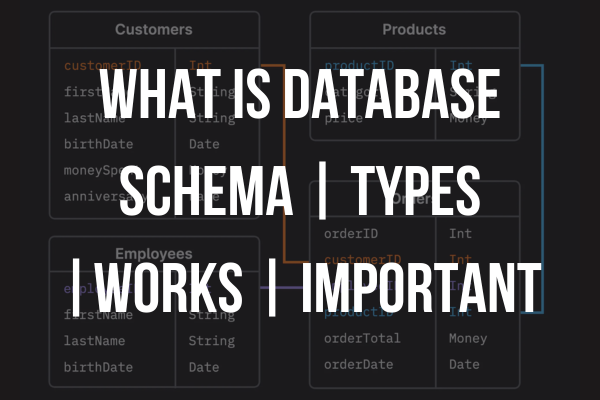A database schema is a crucial aspect of database design and development. It provides a logical and structural representation of the data stored within a database. A well-designed schema is essential for ensuring that data can be easily retrieved and analyzed. In this article, we will delve into what database schema is, why it is important, and how it works.
What is Database Schema?
A database schema is a blueprint that outlines the structure of a database. It defines the data types, relationships between tables, and constraints that apply to the data. Essentially, it is a set of rules and guidelines that dictate how the data in a database is organized and stored.
The schema defines the organization of data in the database, including the tables, columns, and relationships between them. It also specifies the data types, constraints, and rules that apply to the data in each table. In short, the schema provides a map of the database structure, allowing developers to understand how the data is organized and how it can be accessed.
Why is Database Schema Important?
A well-designed database schema is essential for several reasons. Firstly, it enables efficient and effective data storage. A well-organized database schema can optimize the performance of queries, making data retrieval faster and more reliable. It also ensures that the data is consistent, accurate, and easy to access, which is vital for making informed decisions based on data analysis.
Secondly, a well-designed database schema promotes data integrity. It ensures that the data is consistent across different tables and eliminates redundancy, which can cause data inconsistencies and errors. This promotes data quality and reduces the risk of data corruption.
Thirdly, a well-designed database schema promotes data security. It allows access to be controlled at the schema level, providing an additional layer of security to protect sensitive data. It also enables database administrators to set constraints and rules to ensure that the data is secure and protected.
How does Database Schema Work?
A database schema is typically created during the design phase of database development. The process involves identifying the entities and attributes that need to be stored in the database and defining their relationships. The schema is then implemented using a database management system (DBMS), which provides tools and utilities to create and manage the database.
The schema consists of several components, including tables, columns, keys, indexes, and relationships. Tables are used to store data, while columns define the type of data that is stored in each table. Keys are used to ensure data integrity and consistency, while indexes are used to optimize queries and improve performance. Relationships define the connections between tables, allowing data to be retrieved and analyzed efficiently.
Database Schema Types
Database schema is an essential part of database design and development, as it provides a logical and structural representation of the data stored within a database. There are several types of database schema, each with its own characteristics and purposes. In this article, we will explore the different types of database schema and their applications.
Physical Schema
The physical schema is also known as the storage schema and is concerned with the physical storage of data on a storage medium, such as hard disk or tape. The physical schema describes the structure of the files, indexes, and other physical structures used to store data in a database. It defines the physical characteristics of the data, such as the file format, block size, and record format.
Logical Schema
The logical schema is concerned with the logical organization of data in a database. It defines the relationships between the data and the constraints that apply to the data. The logical schema provides a high-level view of the database structure, including tables, columns, and relationships between them.
Conceptual Schema
The conceptual schema provides an abstract view of the database structure. It defines the data elements, the relationships between them, and the constraints that apply to the data. The conceptual schema is a high-level representation of the database structure, which is independent of the hardware and software used to implement the database.
External Schema
The external schema defines the logical views of the database seen by the end-users. It is concerned with how the data is presented to the end-users and includes views, reports, and forms. The external schema is specific to each user or group of users and defines their access to the data.
View Schema
The view schema is a virtual schema that defines the views or subsets of data that can be accessed by the users. It provides an interface to the data in the database and can be used to simplify data access for the users. The view schema is used to present data in a meaningful way to the users, based on their requirements.
E-R Schema
The entity-relationship (E-R) schema is a type of conceptual schema that defines the entities and the relationships between them. It is used to represent the real-world entities and their relationships in the database. The E-R schema includes entities, attributes, and relationships between the entities.
In conclusion, there are several types of database schema, each with its own characteristics and purposes. The physical schema is concerned with the physical storage of data, the logical schema defines the logical organization of data, the conceptual schema provides an abstract view of the database structure, the external schema defines the views of the database seen by the end-users, the view schema defines the subsets of data that can be accessed by the users, and the E-R schema defines the entities and their relationships in the database. Understanding the different types of database schema is crucial for designing and developing efficient and effective databases.





Leave a Reply